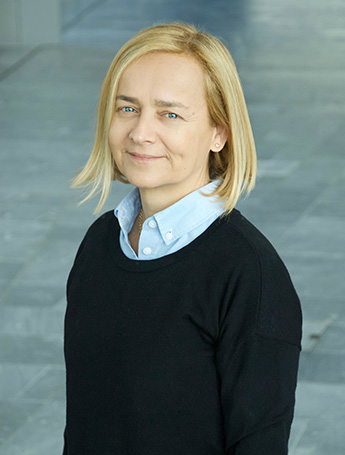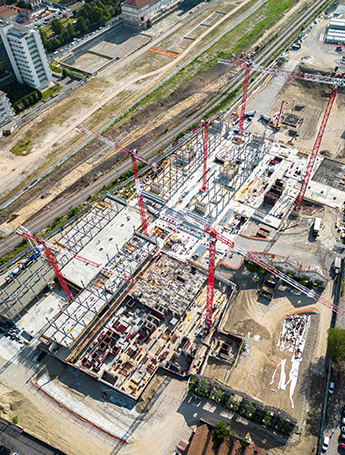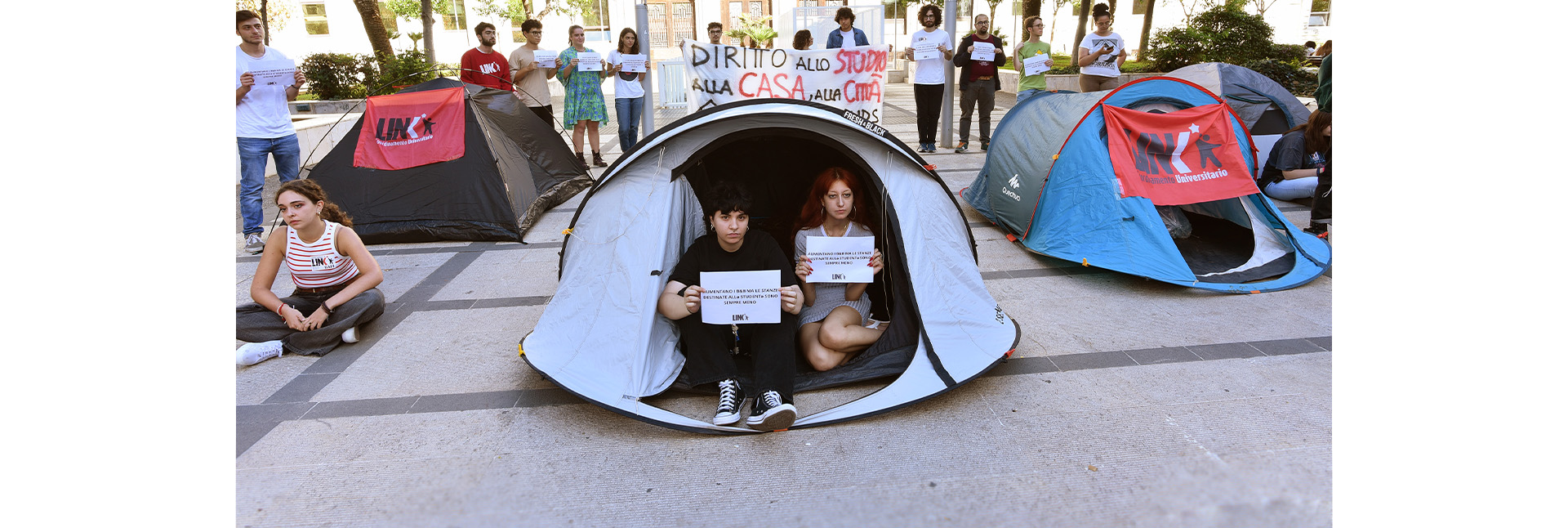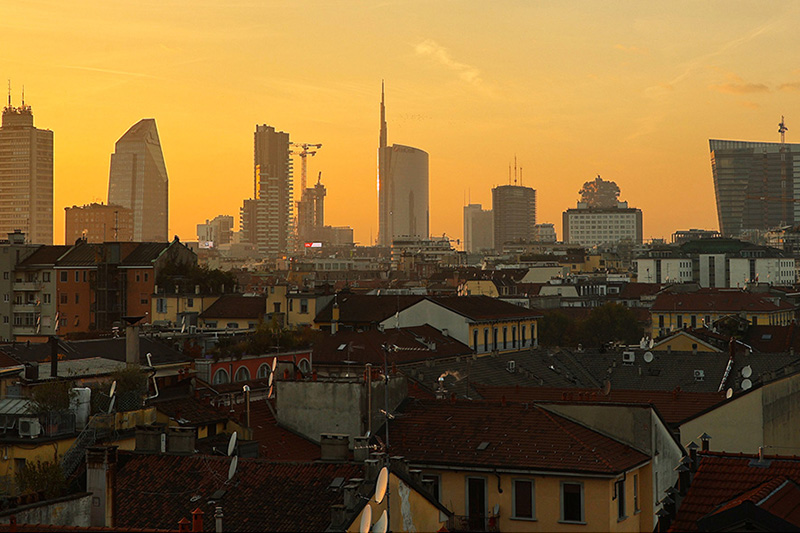A welcoming and inclusive city must meet the needs of permanent residents and those who choose it as a stage in their personal and professional development.
Milan is one of Europe's most avant-garde cities and an increasingly popular destination for young people, who choose it for its universities and job opportunities. Students, PhD students and startup founders play a relevant role in the urban space redesign.
While the education provided by Milan's universities is varied and high-level, today it is necessary to discuss the Lombardy capital's ability to welcome and integrate students who come from other Italian municipalities, so they don’t feel like “guests,” but citizens who have chosen city to train and start their careers.
Urban Stories explored this issue with the Politecnico di Milano Rector Prof. Donatella Sciuto.

Donatella Sciuto, Rector of Politecnico di Milano
Donatella Sciuto said: "The number of public and private university residences in Italy is small and can host only five per cent of students, while in the Netherlands the figure is 30 per cent. This includes Milan, which has more than 200,000 students. "Of these students, 48,000 attend the university I represent, which provides around 1,700 beds. With the opening in September 2023 of the new residence hall in Piazzale Ferrara, we will exceed 2,000 beds, and we plan to create an additional 1,000 in the short term. However, we are still far below what we actually need."
Read also: The role of universities in urban innovation

Construction site of the future student house at
Scalo Porta Romana
This need is being addressed with new real estate developments. These might be private developments but are built in agreement with the municipality and universities. One example is the largest student residence in Italy, developed by the Porta Romana Fund at the airport of the same name, which will house 1,700 beds. Those who cannot find accommodation in one of the approved facilities face a serious problem. Private housing is unaffordable for most students and their families, and university residences co-financed by the Ministry must reserve 60 per cent of the beds to deserving students by allocating scholarships. What about the others? They must spend around €1,000 a month living in tiny Milan flats.
Prof. Sciuto said: "A person should have a net monthly salary of more than €3,000, considering that a rent of no more than 30 per cent of the net monthly salary is considered affordable. Here, PhD students get €1,200 and researchers about €1,500-2,000; even an associate professor does not receive €3,000 monthly, so none of these categories can afford the rent of a 50 square metre flat.”
In addition to the financial problem, there is a need to rethink city spaces for students and young people. Student residences can no longer resemble hotels but must be redesigned as an “augmented student residence” which can integrate into the urban fabric and local community, providing leisure services.
"Politecnico aims at making student residences inclusive places. We realised it is necessary to design differently from the classic hotel room with a bathroom, desk and bed but more like a flat, perhaps with several rooms sharing a kitchen or a communal area. This has been partially implemented in the most recent structures.”
The critical step is converting traditional university residences into places co-managed by residents. Spaces for sharing and mixing, hosting people with different interests, including young entrepreneurs, startup founders, researchers and people coming to Milan to take advantage of growth and work opportunities.
The Rector said: "This would benefit students, who can contact those who have already finished university studies. Those who finished their studies can find young people willing to work on new projects. Today, this solution is impossible for residences under public administration, but it could be an option for the private sector."
Universities have changed profoundly in recent years. They became more about life experience and not only education. When we talk about reception, it is crucial for students to feel directly involved in situations that go beyond food, accommodation and study.
The residences and city fabric must become places of relations and socialisation.
Read also: A new urban planning era
How is it possible to implement a model that brings together living spaces, the availability of services and spaces for start-ups and small companies founded by students or PhD students?
Prof. Sciuto said: "The world of architecture and living does not compartmentalise functions but favours complementary and co-existing situations. Residences are experiencing a new season, becoming increasingly designed as “city parts” which involve a functional mix, positively impacting the living parts of the urban fabric."
The Politecnico di Milano Bovisa campus project located in the Goccia area, goes in this direction. "This project includes the valuable contribution of one of our outstanding Alumni, Renzo Piano. The restored area covers 32,000 square metres and will include student residences and an area dedicated to start-ups, classrooms, and laboratories, in line with the highest international standards. A 24-hectare green space will be preserved. The campus will be accessible, open to the city and the exchange of ideas and functions.”
The Bovisa campus residences mix tradition with the search for new space distribution formulas and can interpret the genius loci, or the soul of this district, which is a historical area. The Rector said: "Quoting Renzo Piano, the project’s essence is inscribed in the place. The idea was already there, in the traces of the factory on the ground, the grooves of the old buildings that bear witness to the DNA inherited from these historic spaces." "The project has an external balcony, which metaphorically takes up the idea of a typical Milanese and Lombardy house, flanked by hanging gardens, as places for meeting and socialising, and open and collective spaces on the upper floors. The ground floor is a public place par excellence, emphasising spaces, places and functions that increasingly dialogue with the city, avoiding closure and self-referentiality."
Read also: COIMA launches its first podcast - Nuove Radici (New Roots)
The Campus is in the Bovisa area, where one of the two abandoned gasometers will be dedicated to sporting activities open to Milan citizens. This is a model for future university residences, which will opt for design choices with greater openness towards the outside space and integrate with the urban fabric.
Currently, Pareto is the closest Politecnico residence to this Campus. It is in the north-west of Milan, ideal for those who want to walk to classrooms in Via Lambruschini, La Masa and Durando. This is one of six Politecnico residences in Milan, plus those in Lecco and Como. “Our Lombardy capital residences are distributed in a network and integrated into the urban fabric. The first residence Casa dello Studente is undergoing renovation. It dates to 1934 and is near the Leonardo campus in Via Pascoli. The Isaac Newton residence is in the residential area of the Gallaratese district, away from to the Politecnico buildings, but well connected by the underground red line."
The Galileo Galilei residence, built in the 1950s by architect Luigi Moretti near Piazza San Babila, is reserved for students using student support and is shared with the Conservatory and other Milanese universities. "Recent buildings include the Einstein residence, opened in 2018 in the Calvairate district, in the south-east of the city, and the newly built Marie Curie residence, in the Corvetto area, opposite the Mazzini district."
Milan, public bodies and private entities must think of innovative arrangements for students, PhD students, young researchers who start a family, or teachers visiting from abroad.
The biggest challenge? It is important to attract and retain off-site students by providing them with the means and services that make them feel an active part of the city where they have chosen to build their future.



